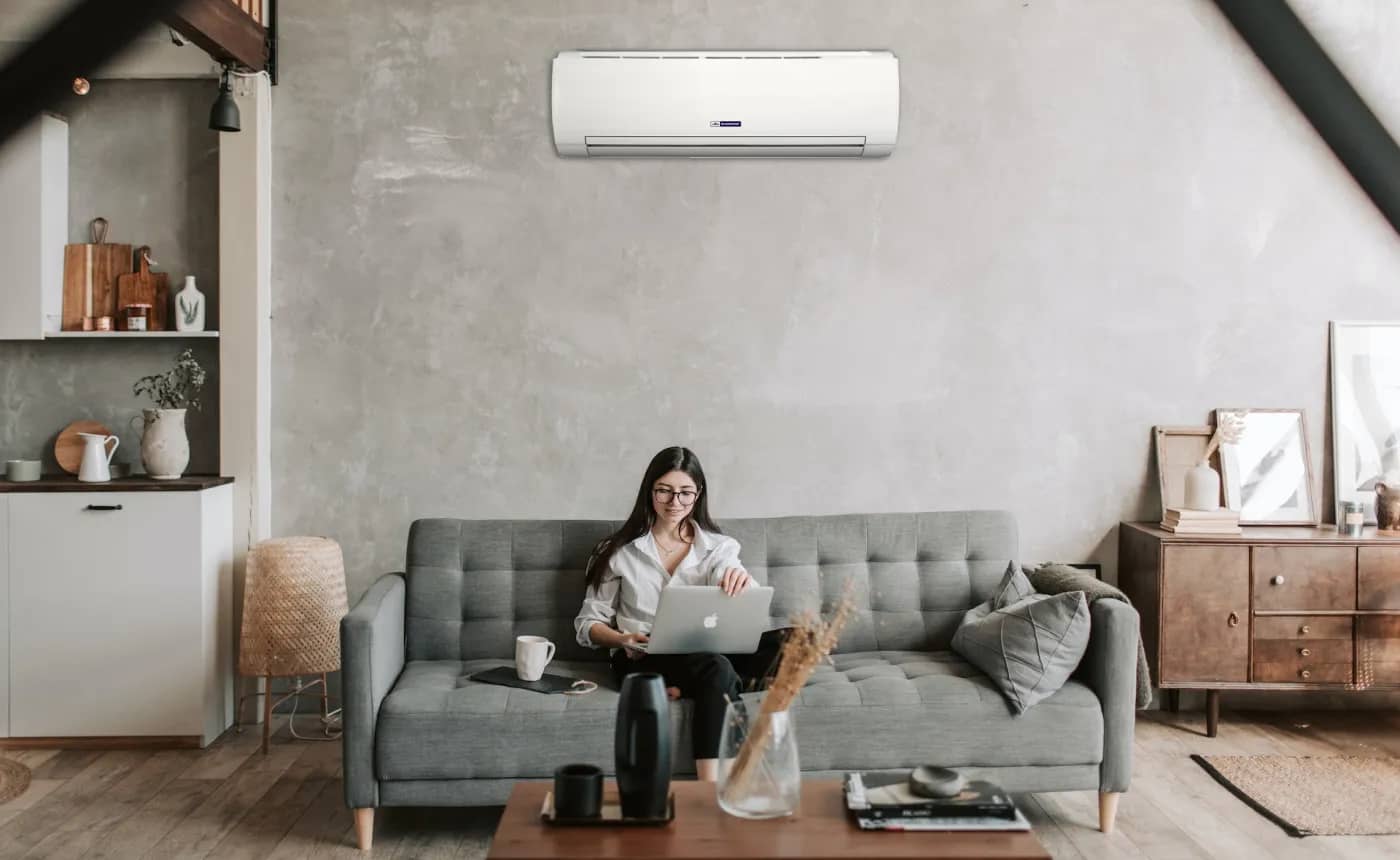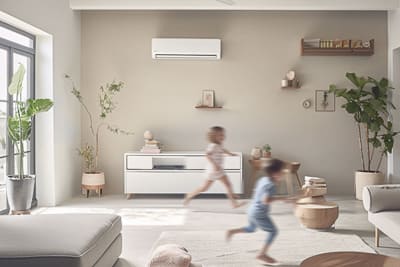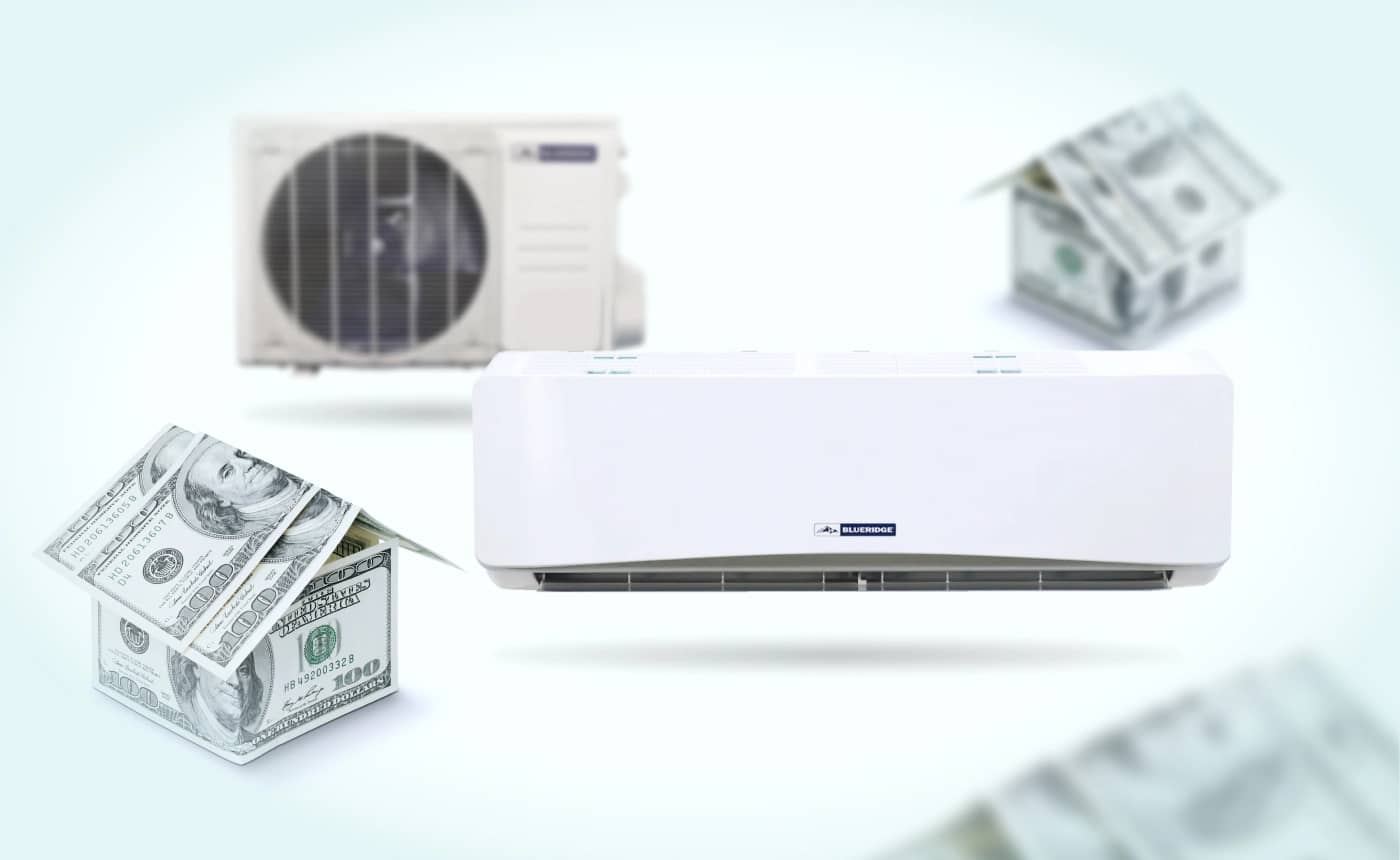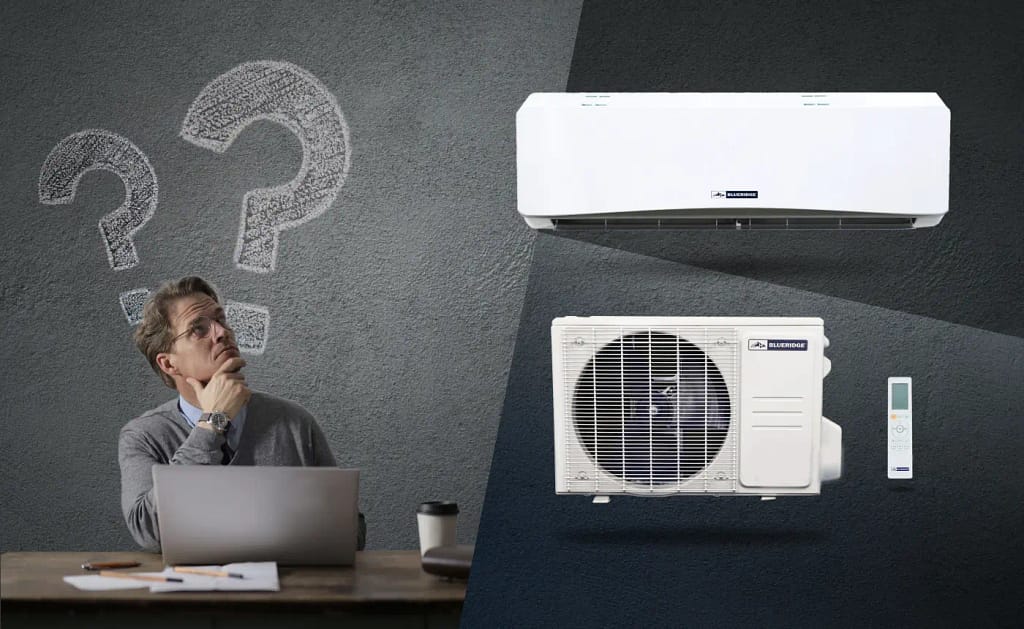
You have a pressing question.
You want to install a ductless dual-zone mini-split in your house or workplace, but you’re concerned that your 110V electrical setup may not be sufficient for a system of this size.
You’re wondering:
Can I install a dual-zone mini-split system with existing 110V wiring in my space?
It’s a good question. And one that we are going to answer.
KEY TAKEAWAYS
- Dual-zone mini-splits are convenient and versatile, making them suitable for various situations.
- Knowing what type of voltage you need to run a dual-zone mini-split is crucial to the safe and effective operation of the system.
- It’s important that you have expert guidance when choosing the correct voltage and the best mini-split for your needs.
If you’re interested in a dual-zone multi-split but aren’t sure if you can install one in your home or office, then it’s natural to be interested in a dual-zone system that runs on 110V.
Let’s learn more about multi-zone systems and their voltage requirements.
If you can’t wait to discover which mini-splits can run on 110V wiring, jump here!
What are Dual Zone Mini-Splits?
Dual-zone ductless mini-splits are advanced climate control systems that allow a homeowner or business owner to heat or cool two distinct areas or rooms using a single outdoor condenser unit or heat pump and two indoor units or air handlers.
These indoor units are incredibly flexible when it comes to design and style.
From the popular high-wall unit to the four-direction airflow of a ceiling cassette, multi-zone systems like the dual-zone are great for making sure that various rooms (or zones) can be heated or cooled at different temperatures, even when they are all running off the same outdoor unit.
Each indoor unit can be controlled independently, providing tailored temperature settings for each zone.
Note that multi-zone systems cannot provide heating and cooling simultaneously. Dual-zone systems can heat or cool two zones at the same time.
But you can adjust the temperature in both rooms (or zones) according to different people’s needs. You can also power individual indoor units on or off as needed.
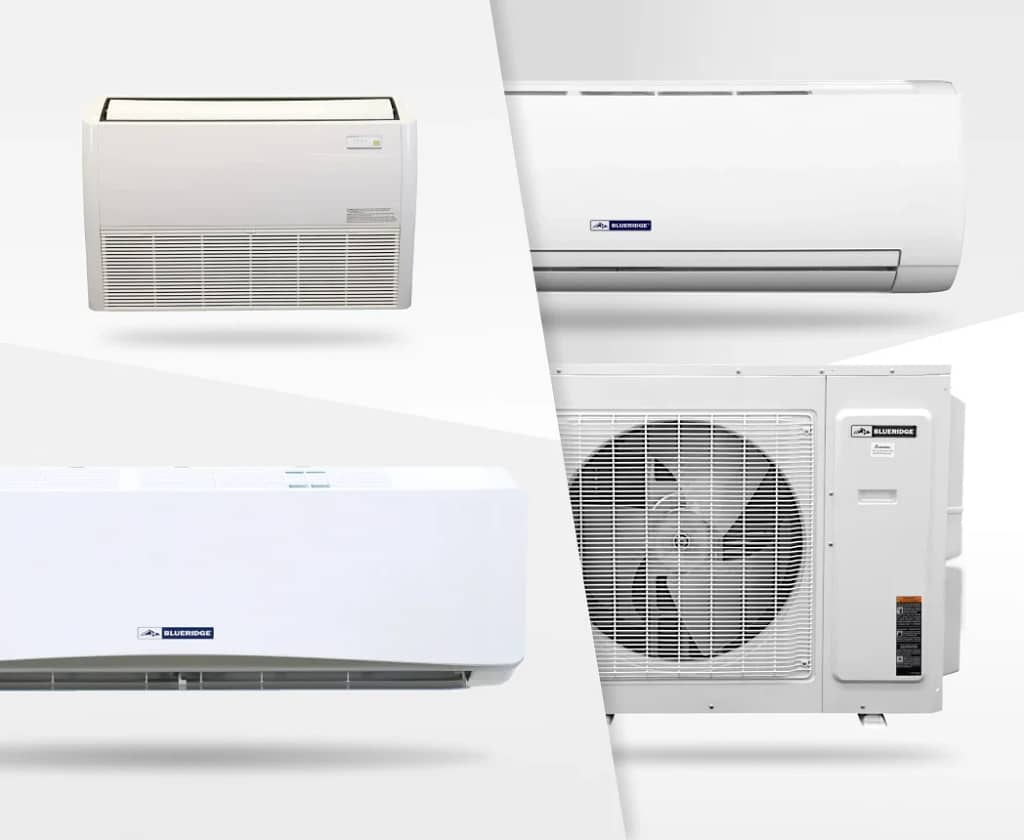
This ability to control zones separately ensures optimal comfort, reduces energy waste, and lowers utility bills.
Ideal for homes with varying temperature needs, dual-zone mini-splits offer an efficient, versatile, and space-saving solution for modern heating and cooling demands.

Is a Dual Zone Mini-Split Right for Me?
As more homeowners look towards innovative and energy-efficient solutions for their home climate control, dual-zone mini-splits are emerging as a popular choice.
These systems balance performance and flexibility and offer excellent benefits catering to modern living needs.
Here’s a deeper dive into the advantages of dual-zone mini-splits and whether or not they are the right system for your space and your budget.
Exploring the Benefits of Dual Zone Systems:
At the core of the dual-zone mini-split system is the ability to serve two separate areas or zones with one outdoor unit.
This means more efficient space utilization and tailored temperature control, which will meet the specific needs of each room or area.

Room-by-Room Customization: With two indoor units connected to a single outdoor heat pump, homeowners can set different temperatures for each zone. This is especially useful in households where occupants have varying temperature preferences. For instance, a home office might require a cooler setting during the day, while a bedroom remains warmer and cozier.

Adaptability: Dual zone systems are perfect for homes with distinct day-night patterns or different usage needs. Suppose one area of the home sees more daytime activity, and another is primarily used in the evening. In that case, you can adjust the dual-zone system to cater to these patterns, ensuring around-the-clock comfort.

Space Saving: Because a dual-zone system requires only one outdoor unit to support two indoor units, there’s less outdoor space taken up. This is a boon for homes with limited exterior space or those prioritizing landscaping and outdoor aesthetics.

Enhanced Energy Efficiency: Dual-zone mini-splits operate based on the demand of each zone. If one zone doesn’t require cooling or heating, its indoor unit can be turned off, conserving energy. This selective operation often reduces energy consumption compared to traditional systems that condition the entire home uniformly.

Quiet Operation: Mini-splits, in general, are known for their quiet operation. With the ability to turn off one of the indoor units when not needed, homeowners can further reduce noise levels, ensuring a tranquil indoor environment.

Ductless Design: One of the most significant benefits of mini-splits is the elimination of ductwork. Duct installation can be invasive, costly, and time-consuming. Dual-zone mini-splits bypass this need, simplifying the installation process.

Flexibility in Placement: The indoor units of dual zone systems can be installed in various locations, be it on walls, ceilings, or floors. This allows homeowners to place units aesthetically and for effective air distribution.

Reduced Installation Time: With fewer outdoor units to install and no ductwork required, the installation process is often faster than traditional HVAC systems. This means less disruption for homeowners and lower installation costs.
What’s the Biggest Difference Between a Dual-Zone Ductless Mini-Split and a Traditional HVAC System?
The biggest difference between a dual-zone mini-split and a traditional HVAC system is their design and air distribution method.

A dual-zone ductless mini-split system does not rely on extensive ductwork to deliver conditioned air through its mounted units.
Instead, a dual-zone system uses compact indoor air handlers that each serve a specific zone and connect to an outdoor condenser.
Each indoor unit allows tailored temperature settings for each zone.
Not only that, but indoor units can come in a range of styles, from wall-mounted to ceiling-suspended, depending on what you are looking for and what will work best for your room and square footage.
On the other hand, a traditional HVAC system uses a centralized unit that conditions the air and then distributes it throughout the home through a network of ducts.
This ductwork can lead to energy losses and less precise temperature control across different areas of the home.
In contrast, the direct approach of mini-splits offers enhanced energy efficiency and more control over individual room temperatures.
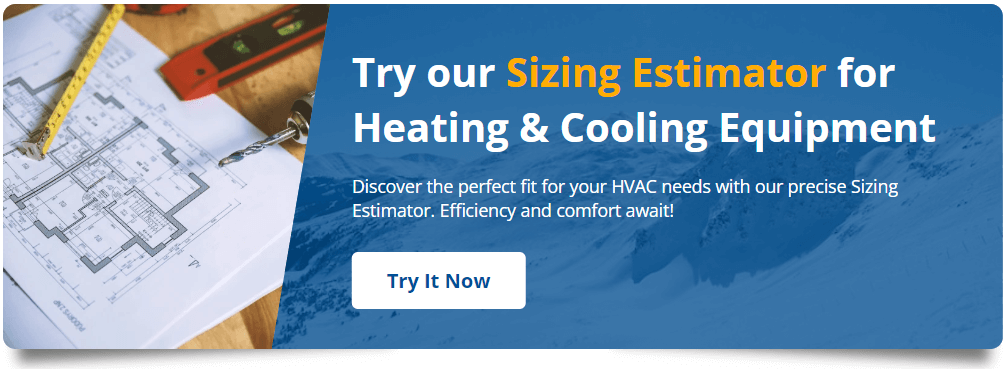
Can I Purchase a Dual-Zone Mini-Split That Will Run on 110V?
You now have a better idea of the advantages of a dual-zone mini-split system, but the question remains…

Can a dual zone mini split work with my home’s current 110V electric setup?

The simple answer? No.
Dual-zone mini-split systems are not designed to run on a home or office building’s standard 110V wiring.
The reason for this is the higher capacity of dual-zone systems. Even the smallest two-zone system at 18,000 BTU draws more power than 110V wiring can handle. All dual-zone mini-splits are compatible with 208/220V wiring.
If a dual-zone system is what you need, your home or business must have 220V wiring.
However, some mini-splits do accept 110V standard electrical wiring, and these systems could solve your electrical woes.
Operating a Ductless Mini Split System with 110V Wiring
Which ductless mini-split systems can run on standard 110V wiring?
If running a mini-split system on 110V wiring is essential, you’ll need to look for a 9000 or 12000 BTU single-zone mini-split rated explicitly for 110V.
Most ductless systems (single-zone and multi-zone) are rated for 208/240V. Some manufacturers offer single-zone mini-splits in 9000 and 12000 BTU capacities with 110V compatibility. To ensure safety, always check the voltage rating on your mini-split.
Voltage ratings on mini-splits exist for two reasons: the power demands of HVAC equipment and the limitations of standard electrical circuits.
Power Demand: The size of a mini-split system, measured in BTU (British Thermal Unit), indicates its cooling and heating capacity.
A higher BTU means the system can heat and cool a larger space or in more challenging climate conditions. It also means the system demands more power to operate effectively.
Electrical Circuit Limitations: The amount of current a standard 110V (or 115V/120V) circuit in U.S. homes can handle is limited. As a mini-split system’s BTU (and thus the power demand) increases, the force exerted on the circuit will become too great for the wire to handle.
This inadequacy will lead to frequent tripping of circuit breakers and potential damage to the mini-split system. It can also be an electrical hazard in your home or building.
Mini-Split Design: Manufacturers design mini-split systems based on the balance of performance and electrical efficiency.
A 9,000 or 12,000 BTU single-zone mini-split designed for 110V can provide ample cooling and heating for a small to medium-sized room while maintaining compatibility with the electrical infrastructure of most homes.
If running a mini-split on a 110V circuit is important, consider a Blueridge single-zone 110V system to achieve your goal.
One cost-effective option for those looking for a 110V system but also needing coverage in two rooms is to install two single-zone mini-split 110V systems. For this setup, you will need enough outdoor space for two condensers. Each outdoor unit will connect to its own indoor air handler.
Regardless of the system you choose or its voltage rating, always install a ductless mini-split on a dedicated circuit.

A dedicated circuit prevents a potential overload from multiple appliances drawing power on the circuit simultaneously.
You can always contact one of Alpine’s HVAC professionals to help you determine what will work best for you.
Want to Learn More? Contact Alpine Home Air for Help
Let’s face it. Even though the idea of mini-split heating and cooling is exciting for our budgets and the planet, we still want to know more.
Heating or cooling a space with a dual-zone mini-split is still a relatively new concept for many of us.
And this is where a company like Alpine comes in.

Since 2002, Alpine has delivered heating and cooling solutions at a low cost to you and the environment.
From helping you understand which mini-splits can operate on 110V to clarifying the Heating Seasonal Performance Factor (HSPF) to explaining a concealed-duct indoor unit, Alpine Home Air Products has the best and most knowledgeable HVAC professionals ready to answer your questions.
If you want to learn more about how a ductless mini-split system can benefit you, contact us today. We can’t wait to have you join the Alpine family!

